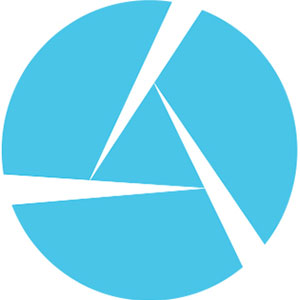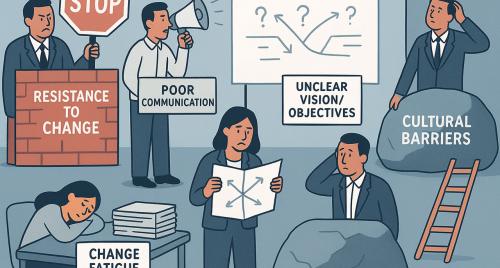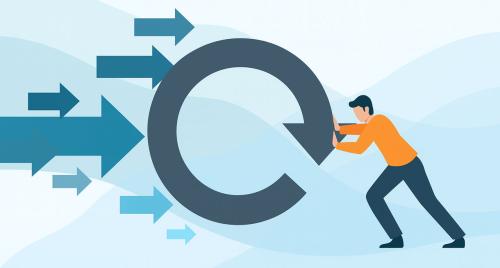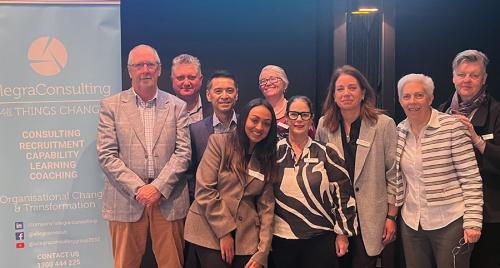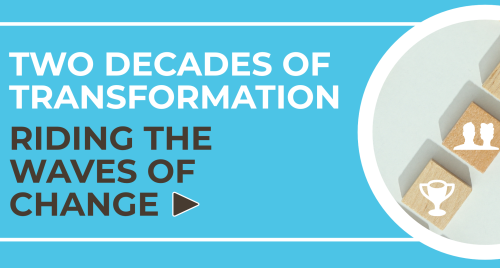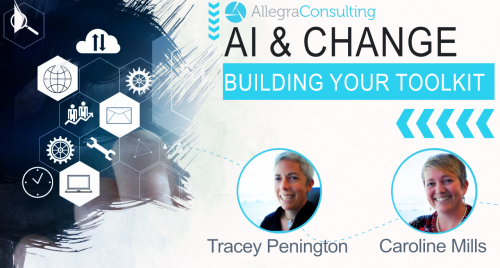
Part of doing great change management is helping people through the psychological journey of change. Understanding our brain and how it reacts in social settings, including workplaces, can be a great place to start, and using David Rock's SCARF model(2) is an easy way to have a conversation with teams and individuals experiencing change in the workplace.
What's the Neuroscience Behind the SCARF Model?
The model, based on neuroscience which is the study of our nervous system and brain, focuses on what drives our behaviours and thinking functions. Our response to changes, particularly those forced on us, is driven by the Limbic part of our brain. The Limbic system, or reptilian brain, is the reactionary part of our brain, and one of the oldest, where our fight or flight, pleasure/reward, and emotional responses originate.
The Limbic system is a part of the brain that is not sophisticated or good at judging the severity of a threat or if it is a threat at all. We rely on the Cerebral Cortex to manage the response with reasoning and good judgement. However, we can all be subject to what is called the “Amygdala Hijack”, which is an immediate, overwhelming, and out-of-proportion response to a stimulus. Daniel Goleman coined the term in his 1996 book Emotional Intelligence(1).
Over the past few years, we have experienced ongoing change and disruption, and the speed of change is not slowing down. Our brain responds to change as a threat which can initiate an Amygdala Hijack. The model will help us formulate a response that can be applied at an individual, team, and organisational level.
What is the SCARF model?
The SCARF model was developed by David Rock in 2008 and is primarily applied in a Change environment. However, it is also useful in developing the best approach to collaboration, coaching, and training situations. It represents the highest level of engagement and is highly relevant for leaders to be aware of and to apply in everyday situations and not just those we are encountering now.
While experienced in complex social/professional situations, our response to change is binary and each segment of the SCARF model represents either a Threat or a Reward. The threat response is likened to physical pain as both responses are in the same primitive part of the brain.
- Status – our relative importance to others.
- Certainty – our ability to predict the future.
- Autonomy – our sense of control over events.
- Relatedness – how safe we feel with others.
- Fairness – how fair we perceive the exchanges between people to be.
Applying the Scarf Model During Change and Disruption
We can refer to the SCARF Model to consider our team’s response to the pandemic and how best to address the responses we identify as well as for any challenging interactions you may be experiencing with others.
Status - Sense of Personal Worth
Status can be threatened by giving advice or instructions, feedback, and even by everyday conversations. Status is about the person’s perception of personal worth in relation to others and is important from a team and individual perspective to be clear and reinforce a positive sense of status. Change and disruption to our work and personal lives can impact how we can reinforce a positive sense of status. A threat to status can be remedied by:
- Line managers involving team members in decision making.
- Providing constructive and regular feedback.
- Providing opportunities to shine.
- Reinforcing status through positive communication.
Certainty - Sense of what the future holds
During times of change, we are limited by how much certainty can be conveyed, however, stating this and letting the team or the individual know that you do not have information is important and very helpful to communicate. With that in mind, these are steps that can be taken to deal with a lack of certainty:
- Consider what can be controlled and encouraged.
- Clarity and honesty in all communications is critical - any gaps may encourage rumour, which can be damaging.
- Be open, honest, and transparent.
- Set agreed timeframes and dates for communication and follow through.
- Establish and set clear expectations of what might happen and desired outcomes.
Autonomy - Sense of Control
Autonomy is the perception of exerting control over one’s environment - having choices, clear responsibilities, and decision-making rights. It is important that everyone has clearly defined responsibilities, choices available to them and the ability to make decisions. To minimise the autonomy ‘threat’ and gain a sense of control, try the following:
- Apply the Circle of Concern model to identify what is currently in your realm of control and let go of those things currently outside of your control.
- Line managers continue to empower your team members, support them, and encourage independent action.
- Continue to be clear in your communications and expectations for yourself and your team members.
Relatedness - Sense of Safety with Others
Relatedness, or a sense of safety with others, is a powerful driver for positive interactions with others. Being connected to a group or team is a fundamental human need, in fact, lack of relatedness creates the same neural response as physical pain. Strategies to address this include
- Having regular 1:1 and team meetings
- Implement a buddy system within the team
- Celebrate and encourage diversity of thought
- Run virtual social events and ensure people participate within their “comfort zone”
Fairness - Perception of fair exchanges between people
Unfair exchanges generate a strong threat response. Perceived improvement in fairness activates the same neural response as a monetary reward. Line managers, in particular, need to ensure the following:
- Establishing clear expectations in all situations
- Include the team in setting clear ground rules which are agreed by all team members
- Be aware of equity and fairness in all dealings and the perception created
Is the SCARF Model Right for Me?
The SCARF model provides a useful lens through which to view how we are experiencing change and disruption and how this is impacting the way in which we relate and interact with others. Consider which elements of SCARF are triggering threat responses in yourself and your team members and apply some of the above strategies to reduce the threat response, allowing for more harmonious interactions with others. Everyone experiences challenging situations in different ways, therefore, by becoming familiar with the model, it can be a template for identifying team dynamics or interpersonal difficulties and how to remedy any issues.
You can try out this quiz from the NeuroLeadership Institutetm to determine how each element of the SCARF Model correlates to you.
- Goleman, D. (1996). Emotional intelligence: Why it can matter more than IQ. Bloomsbury Publishing.
- Rock, D. (2008). SCARF: A brain-based model for collaborating with and influencing others. NeuroLeadership journal NeuroLeadership Institute.
